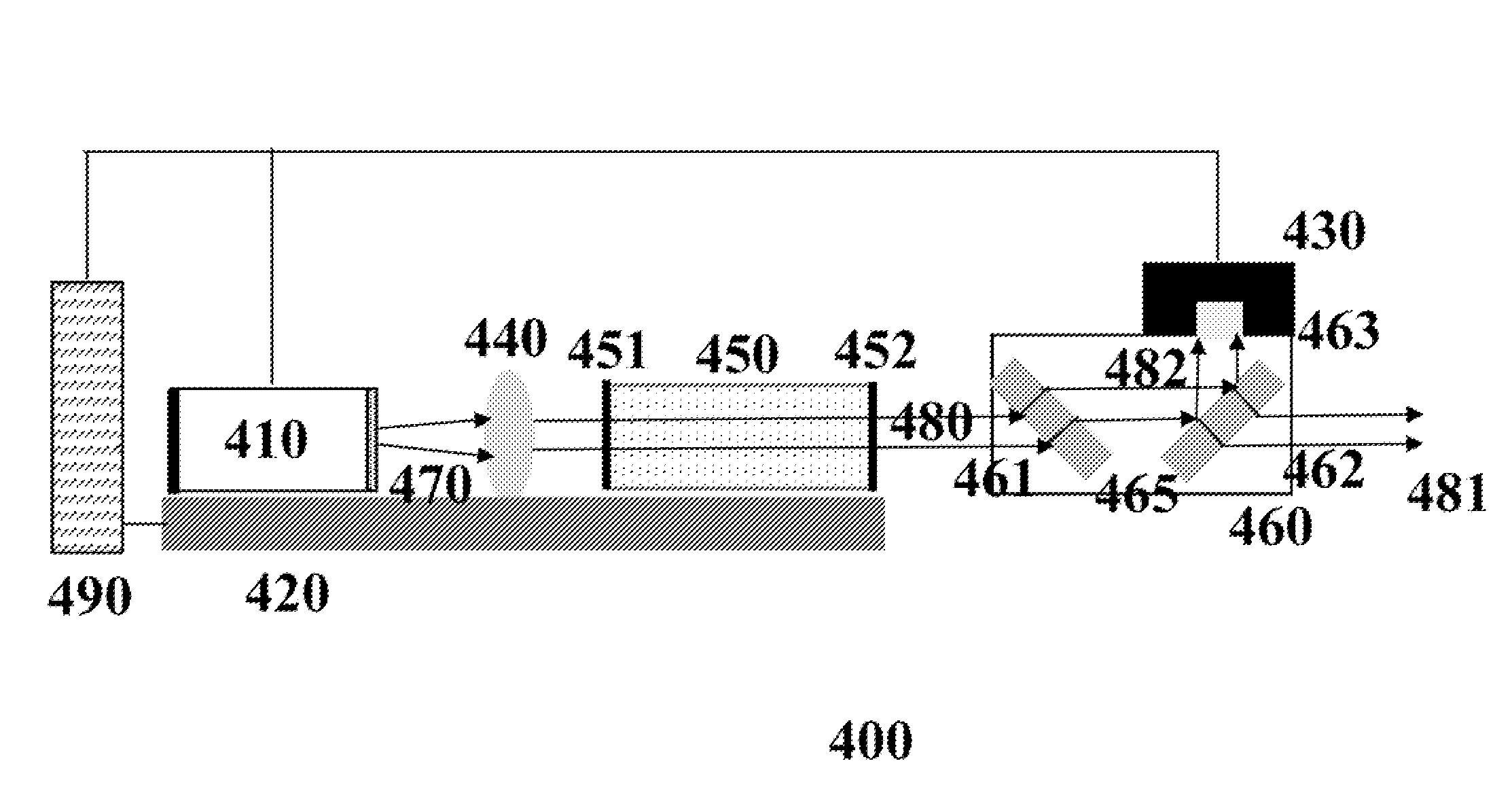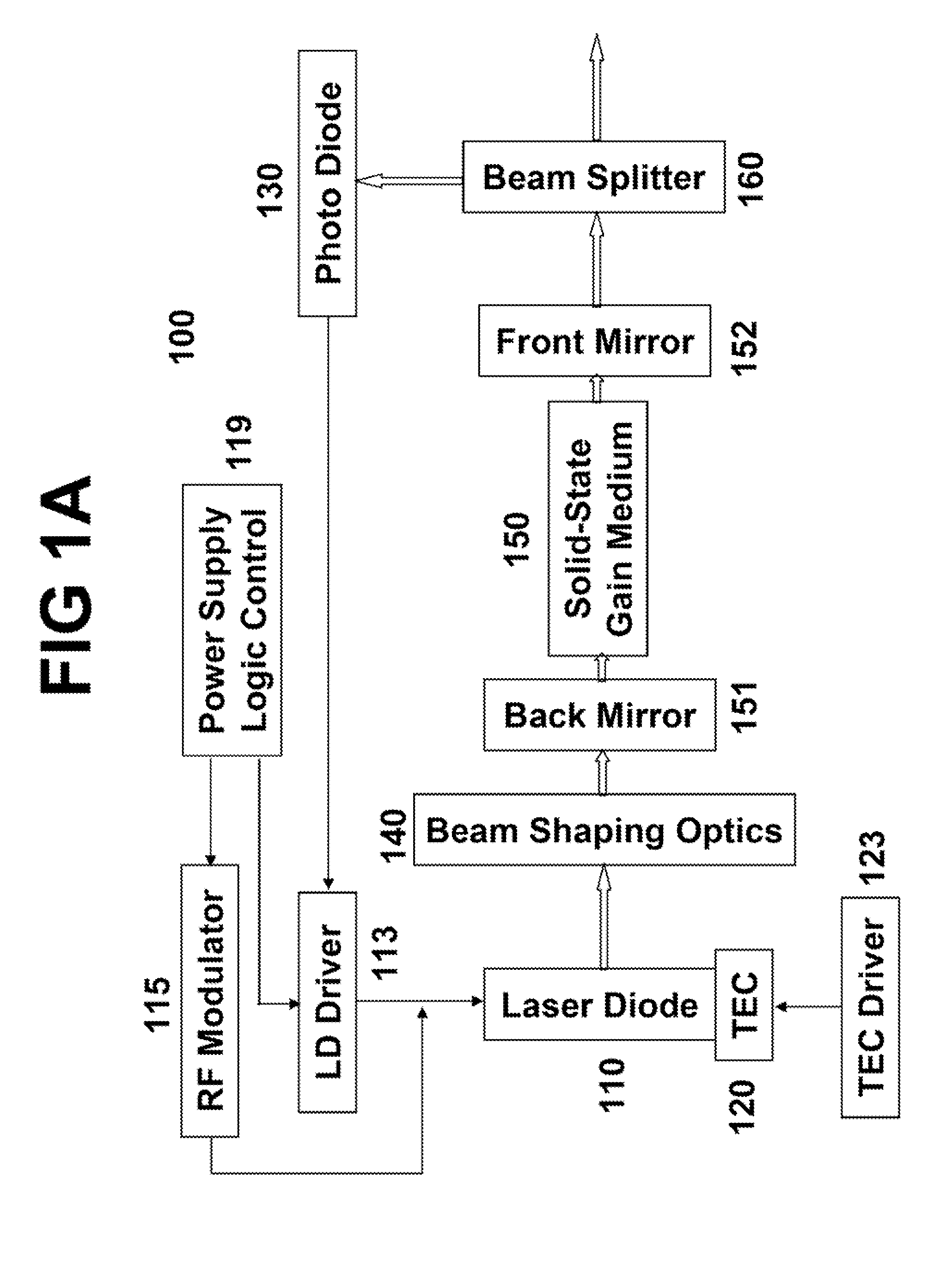Wavelength and Intensity Stabilized Laser Diode and Application of Same to Pumping Solid-State Lasers
a laser diode and laser diode technology, applied in the direction of laser cooling arrangement, laser details, active medium shape and construction, etc., can solve the problems of destabilizing the output power of the solid-state laser, dramatic drop of the efficiency of the dpss laser, and sensitive performance of the laser diode, so as to effectively suppress the detrimental effects of unwanted optical feedback and less perturbation
- Summary
- Abstract
- Description
- Claims
- Application Information
AI Technical Summary
Benefits of technology
Problems solved by technology
Method used
Image
Examples
Embodiment Construction
[0048]As will be described in more detail hereafter, there is disclosed herein a method and a device for stabilizing the output of a DPSS laser.
[0049]Referring to drawings and in particular to FIG. 1A, wherein a functional block diagram of a solid-state laser system constructed in accordance with the present invention is shown. The solid-state laser system 100 consists of a laser diode 110, which is in physical contact with a thermoelectric controller 120 for temperature adjustment and stabilization, a photodiode assembly 130, a beam shaping optics 140, a solid-state gain medium 150, which is placed between a pair of mirrors 151 and 152 to form a laser resonator, and a beam splitter 160. The laser diode 110 is driven by LD driver 113, together with an RF modulator 115. The DC bias generated by the LD driver 113 is superimposed by a high frequency signal generated by the RF modulator 115. With intentional change of the drive current at high frequency, the wavelength of the laser diod...
PUM
 Login to View More
Login to View More Abstract
Description
Claims
Application Information
 Login to View More
Login to View More - R&D
- Intellectual Property
- Life Sciences
- Materials
- Tech Scout
- Unparalleled Data Quality
- Higher Quality Content
- 60% Fewer Hallucinations
Browse by: Latest US Patents, China's latest patents, Technical Efficacy Thesaurus, Application Domain, Technology Topic, Popular Technical Reports.
© 2025 PatSnap. All rights reserved.Legal|Privacy policy|Modern Slavery Act Transparency Statement|Sitemap|About US| Contact US: help@patsnap.com



